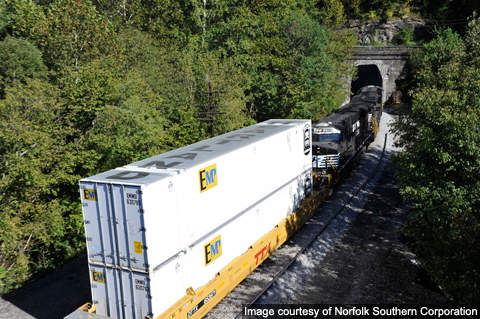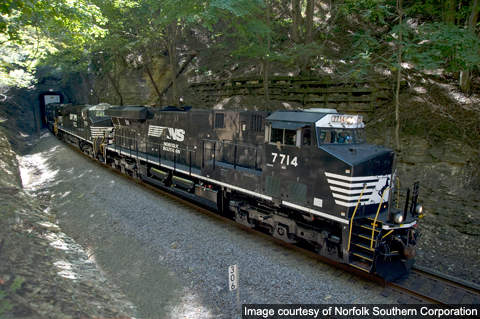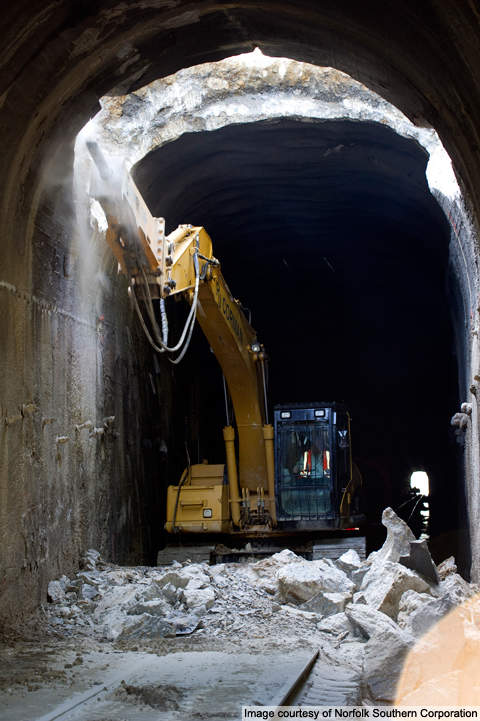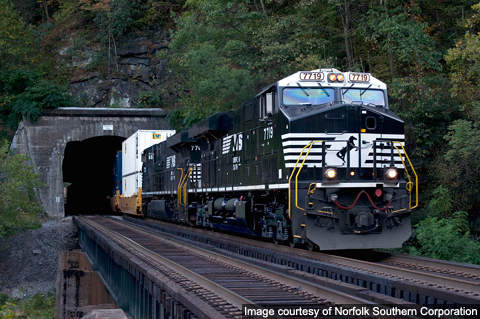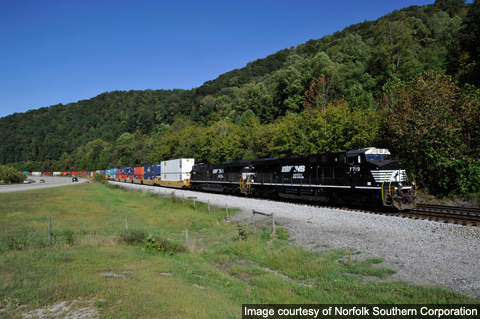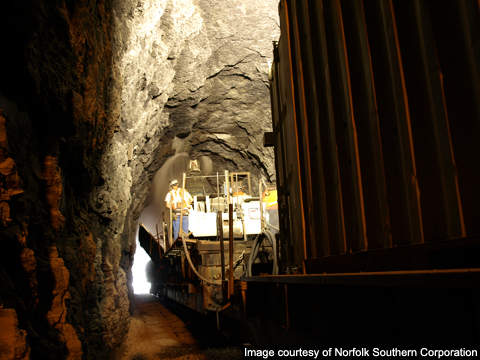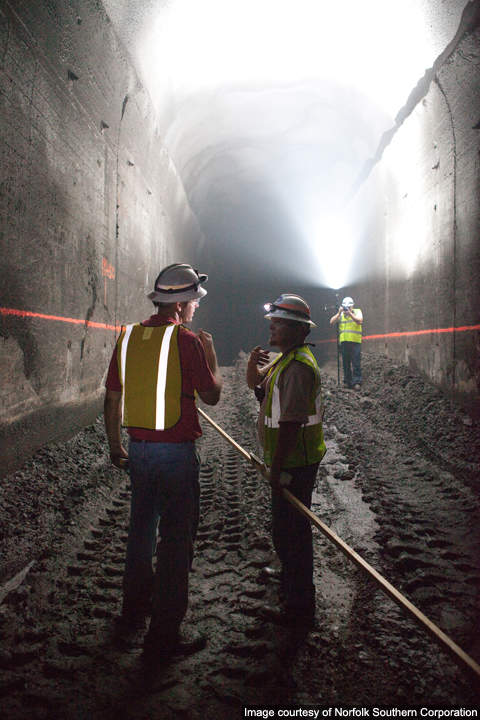The Heartland Corridor Project is an 852km-long railway line constructed in Virginia, US. It carries double stack container freight trains between the Port of Norfolk and Chicago.
The line became operational on 9 September 2010. The line was built by Norfolk Southern Railway (NS) and Federal agencies through a public-private partnership. The total cost of the project was $321m.
Line routes
The Heartland Corridor links the Port of Norfolk to Chicago via Columbus. Connecting from south to north, the line starts from the Port of Norfolk and passes through Lynchburg, Roanoke intermodal terminal, Bluefield, Welch, Williamson, Prichard intermodal terminal, Kenova, Ironton, Portsmouth, Rickenbacker intermodal terminal and Columbus.
From Columbus, it passes via Marion, Bellevue and Fort Wayne to finally reach Chicago.
The Ohio Rail Development Commission (ORDC) awarded a $6.1m contract to the Norfolk Southern Railway in June 2010 to extend the line route from Columbus to Cincinnati, Ohio for the accommodation of double-stack container freight trains. The works included building tracks at the Rickenbacker intermodal terminal as well as maximising the clearances at five locations between Columbus and Sharonville.
The extension line starts from the Port of Norfolk and reaches Cincinnati via Columbus, Springfield and Dayton.
Project
Double-stacked container trains previously had to travel a longer route via Harrisburg or Knoxville due to insufficient vertical clearances along the mainline route. Norfolk Southern Railway proposed the Heartland Corridor Project to raise the size of tunnels and bridges along the route in order to accommodate double stacked container freight trains in the Port of Virginia and Chicago line route.
The project reduced the journey time from three days to two by cutting 320km from the route, creating a shorter and faster route for heavy cargo transportation. It also decreased highway congestion, fuel consumption and green gas emissions while meliorating air quality and transportation safety.
As part of the project NS Railway spent $191m for tunnel and overhead obstruction clearances. The Rickenbacker intermodal terminal built in Columbus, Ohio cost $70m. The Commonwealth Railway serving the new APM Terminal in Portsmouth, Virginia was relocated at a cost of $60m.
Financing
The US Government granted $111m for tunnel clearances and Rickenbacker intermodal terminal construction from federal stimulus funds. The Commonwealth of Virginia provided $9m for tunnel clearances. ORDC provided $836,355m. The remaining cost was borne by Norfolk Southern Railway.
The US Government funded $3.6m for extension under the American Recovery & Reinvestment Act 2009. The remaining $2.5m was provided by Norfolk Southern Railway and the Ohio-Kentucky-Indiana Regional Councils.
Contractors / suppliers
Johnson Western Unite, LRL Construction and RJ Corman Railroad Construction were contracted for tunnel enlargements. Hatch Mott McDonald was the prime design consultant. It carried out field investigations and preliminary design engineering.
STV offered construction management services including building, monitoring and documentation, geotechnical analysis, track time schedule and contractor invoices inspection.
LRL Construction maximised the vertical clearance of the Twin Branch 1 & 2, Big Four 1 & 2, Antler 1 & 2, Cooper Tunnels and the West Vivian Tunnel.
Quikrete Companies supplied Shotcrete MS Fiber, Core Fill Grout and Precision Non-Shrink Grout.
Infrastructure and construction
The main route of the line already contained 28 tunnels, seven railroad bridges, three overhead bridges, three railway signals and three sets of overhead wires.
Modifications to the existing infrastructure included increasing the vertical clearance of 28 tunnels and 24 overhead obstructions in the Appalachian Mountains by 2ft above the head room to allow double-stack container freight trains. Vertical clearance of the bridges at Ashville, Lubeck, Glen Jean and Ironton was also increased.
Tunnels spanning 5.7 miles (9.2km) area were modified through roof excavation, liner replacement, arched roof notching, and track lowering and realignment.
Round shaped tunnels were transformed to square shape to increase the wall corners of the tunnel. Eight tunnels underwent linear notch work, 18 were replaced with new roofs and one daylighting tunnel was left as open roof tunnel.

